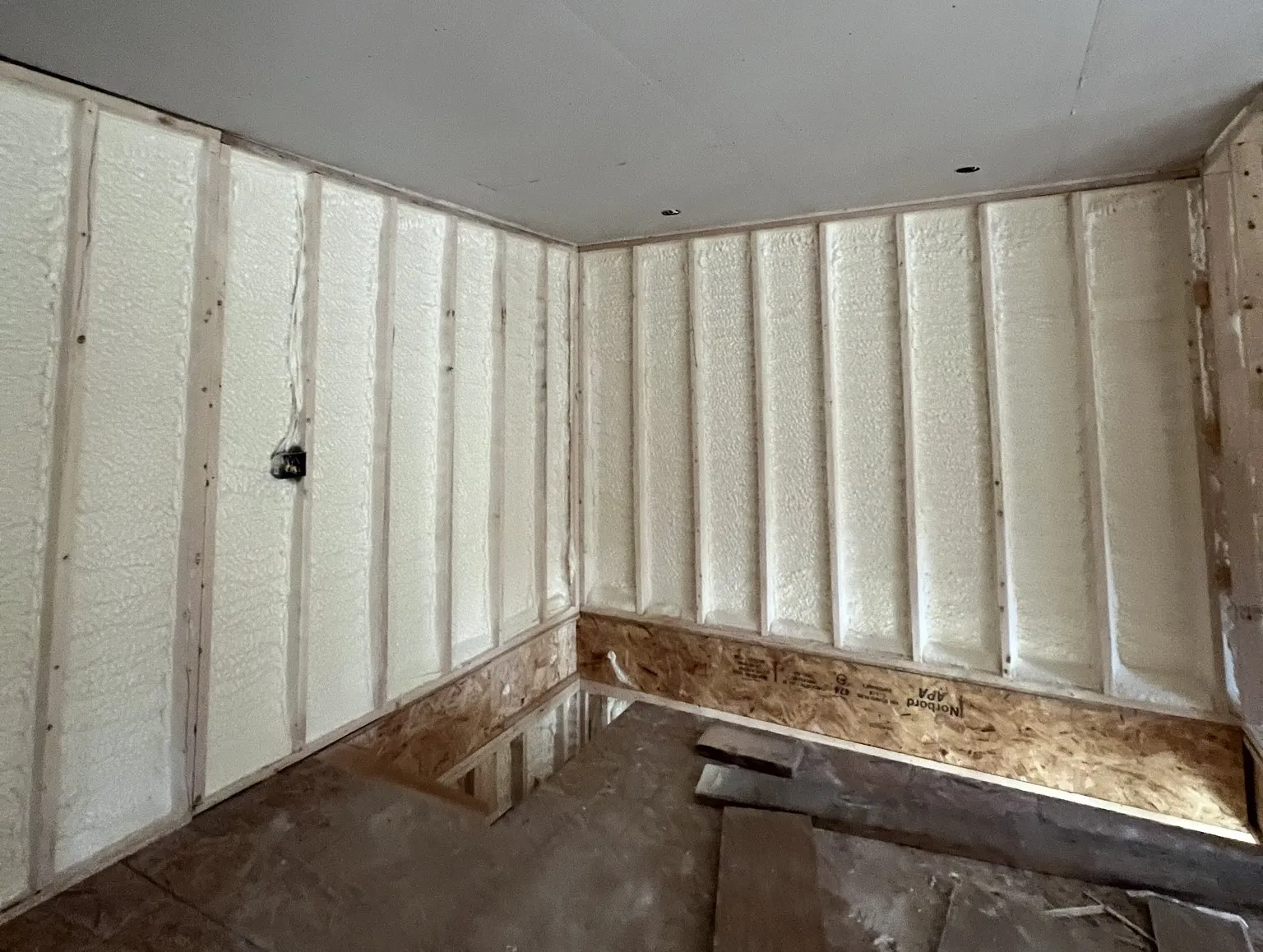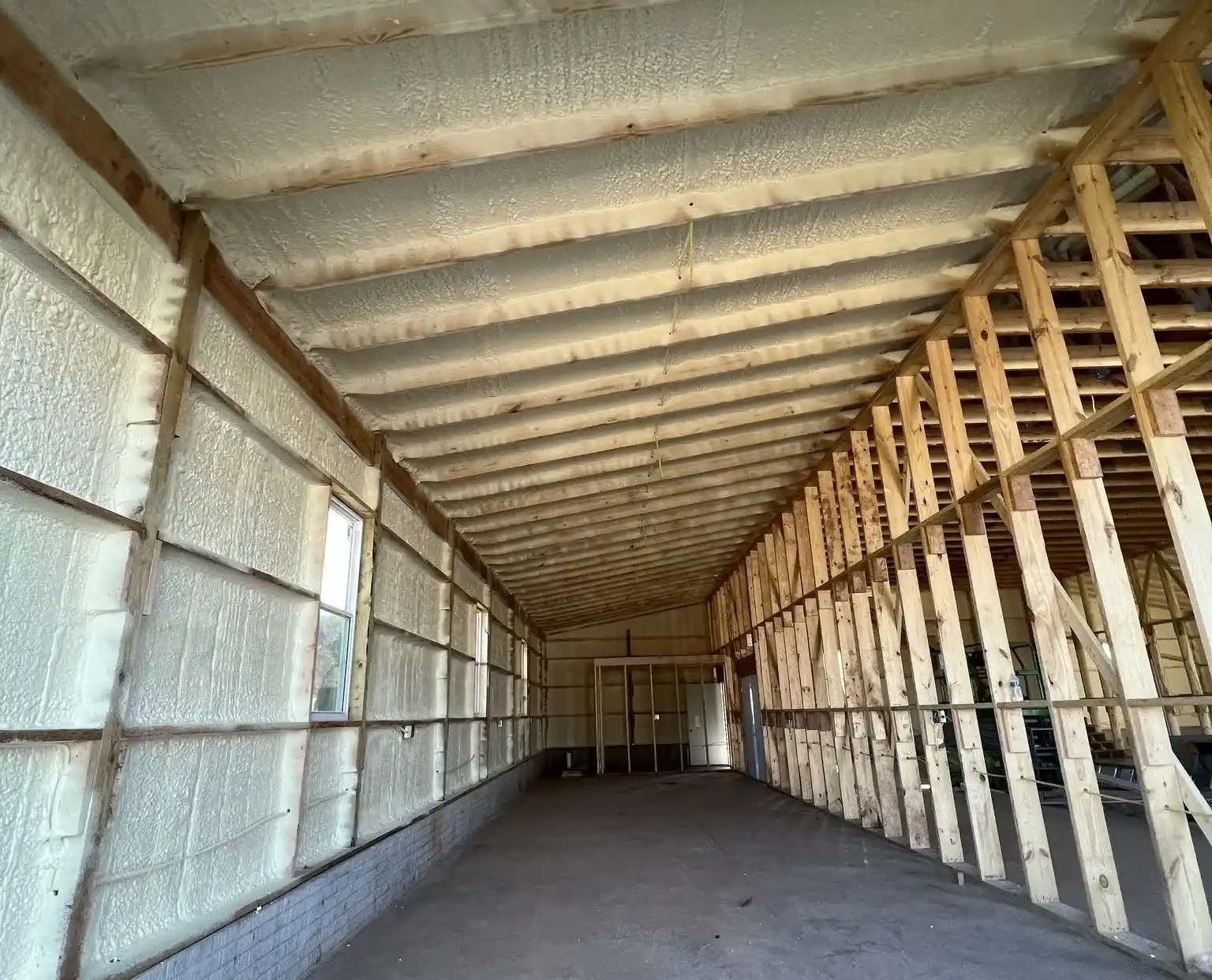
Spray foam insulation improves energy efficiency in Columbus, OH homes by reducing air leakage and improving thermal resistance. In both old and new homes, spray foam prevents conditioned air from escaping and blocks outside air from entering. This stabilizes indoor temperatures, reducing HVAC system workload and energy use.
Columbus experiences wide seasonal shifts, with hot, humid summers and cold winters. Insulation solutions that perform well in both heating and cooling seasons are necessary. Closed-cell and open-cell spray foam create an air barrier that works in both extremes. Application to walls, attics, rim joists, and crawl spaces reduces thermal bridging and supports consistent indoor comfort.
Expertise Statement: Ohio Valley Spray Foam applies spray foam insulation based on real-world performance in central Ohio homes. Projects are informed by regional climate data and hands-on knowledge of structural configurations common in the area.
| Feature | Spray Foam (Closed-Cell) | Spray Foam (Open-Cell) | Blown-In Fiberglass |
|---|---|---|---|
| R-Value per Inch | 6.0–7.0 | 3.6–4.0 | 2.2–2.7 |
| Air Barrier | Yes | Yes | No |
| Water Resistance | High | Low | Low |
| Vapor Barrier | Yes | No | No |
| Sound Dampening | Moderate | High | Moderate |
| Structural Support | Yes | No | No |
| Best Use Areas | Exterior walls, basements | Attics, interior walls | Attics, wall cavities |
| Property | Closed-Cell Spray Foam | Open-Cell Spray Foam |
|---|---|---|
| Density | 1.75–2.2 lb/ft³ | 0.4–0.6 lb/ft³ |
| Expansion Rate | < 10x | 30–60x |
| Water Permeability | <1.0 perm (1″ thick) | >10 perm (3″ thick) |
| Application Temperature | 40°F to 120°F | 40°F to 120°F |
| Thermal Conductivity (k) | ~0.17 W/m·K | ~0.035 W/m·K |
The U.S. Department of Energy identifies air leakage as responsible for 25%–40% of the energy used for heating and cooling in the average home (DOE, 2023). In Columbus, where winter heating is essential for several months and summer cooling systems run heavily from June through August, reducing uncontrolled airflow directly cuts demand on HVAC systems.
Recent data from AEP Ohio shows that homeowners in Central Ohio who upgraded insulation reported average energy savings of 15%–30%. Field measurements confirmed spray foam in attic assemblies prevented ice damming during January freeze cycles and lowered indoor humidity levels during July heatwaves.
Bonus Tip: In older Columbus homes, rim joist cavities are common points of air leakage. Sealing these areas with closed-cell spray foam significantly reduces winter drafts.
Bonus Tip: For pole barns or metal outbuildings converted to living space, spray foam prevents condensation and rust development on interior wall panels.

Spray foam is a permanent solution that typically lasts the lifetime of the structure when installed correctly.
Only if access is available from inside or outside. Most retrofit installations target attics, basements, or crawl spaces.
Yes. Foam should not be sprayed directly over live wires but can be applied safely around junction boxes and conduit.
Open-cell spray foam offers high acoustic absorption, which helps reduce sound transmission through walls and ceilings.
Spray foam insulation delivers measurable energy savings in Columbus homes, especially in areas with major temperature swings. Closed-cell and open-cell foams suit different structural and environmental needs. Evaluate roofline design, existing insulation, moisture exposure, and attic accessibility before selecting a product.
Use data and performance outcomes to guide your decision. Proper installation is critical. Poor application can lead to air leaks or off-ratio curing. Work with experienced installers who understand local structures and seasonal patterns.
For insulation upgrades that support long-term energy performance, Ohio Valley Spray Foam applies proven materials using tested methods. Email at [email protected] or call (740) 629-9984 to discuss site-specific needs or schedule an assessment.
Small gaps or damaged sections can be re-foamed or patched. Entire removal is rarely necessary unless moisture damage occurs.
Reduced load may allow for downsizing HVAC systems. A home energy audit can help determine new sizing.
Yes. It reduces outside air infiltration and dust. Proper ventilation remains necessary to manage indoor humidity.
Spray foam requires no maintenance once cured. Annual visual checks in accessible areas can confirm no separation or damage.
Spray foam is not a food source and resists most pests, though rodents can chew through if they are already nesting in wall cavities.